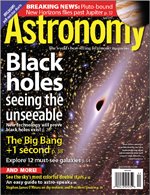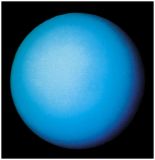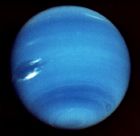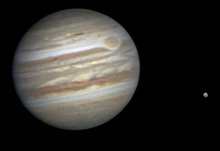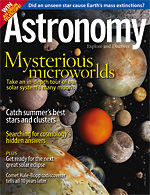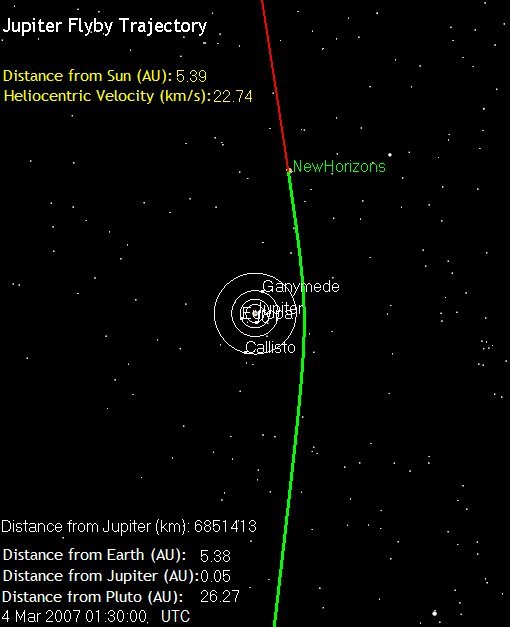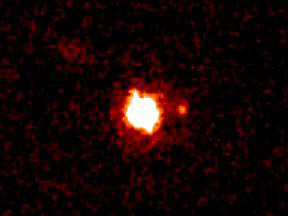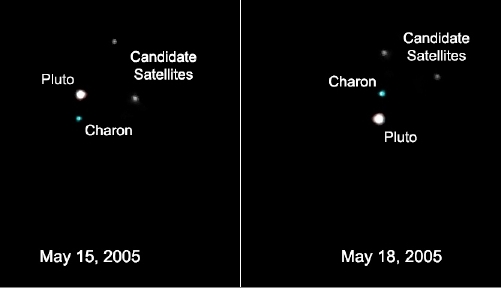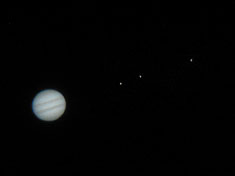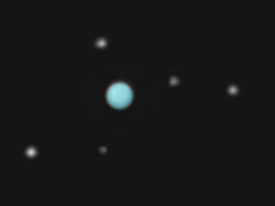Thursday, March 1, 2007
Beginning and Death of our Solar System
This video shows what will happen at the beginning of our Solar System and 5 billion years later: http://www.youtube.com/watch?v=DPfzHiwzyzk&NR
Monday, February 26, 2007
Question these week:
Every week,I will give you guys a question.This week's question:
How long does it takes for our Sun to orbit the core of our Milky Way Galaxy?
How long does it takes for our Sun to orbit the core of our Milky Way Galaxy?
Sunday, February 25, 2007
Saturday, February 24, 2007
Agreement
Whoever visiting this blog,must vote here.Please be honest.Vote once only,and do not apply yourself with more than 1 sort of name.
Whoever say Pluto should be reclassifield once again as a major planet,and opposes the IAU's decision of downgrading Pluto,say:
I oppose! or
I respect its decision.
Whoever say Pluto should be reclassifield once again as a major planet,and opposes the IAU's decision of downgrading Pluto,say:
I oppose! or
I respect its decision.
Friday, February 23, 2007
Magazine issue
By the way,I subscribe to Astronomy issue(Featured below),Planet Earth's best selling astronomical magazine issue.When you order:
12 issues,get 39% off!
24 issues,get 44% off!
36 issues,get 46% off!
12 issues,get 39% off!
24 issues,get 44% off!
36 issues,get 46% off!
Tuesday, February 20, 2007
Monday, February 19, 2007
NASA's current planet missions(still heading for their destination)
STILL PLAYING CATCHING?:
NASA's Messenger spacecraft launched in 2004,still orbits the Sun,studying it.In 2011,it will continue the work of NASA's Mariner 10(1973 to 1974),which only mapped half of Mercury's surface.Messenger will study more about this little known major planet.
RUSHING WITHOUT A BREAK!:
NASA's New Horizons spacecraft launched in 2006,is currently traveling at 52ooomph,will increase its speed by a few thousand mph after the gravity assist from Jupiter.It is the fastest recorded spacecraft in the history of space age.It will reach Pluto in 2015,studying it for almost 6 months.
THE FINAL FRONTIERS:
NASA's Pioneers 10,11 and Voyagers 1,2 are the only 4 spacecrafts out at our Solar System.Pioneer 10,the first spacecraft to cross the deadly Asteroid Belt and the first to visit Jupiter,is almost 100AU from the Sun right now,heads Northeast out of our Solar System to the star constellation Taurus,which will reach there an estimated 2 million years later.Pioneer 11,the first spacecraft to visit Saturn,is currently the slowest among the 4,heads Southeast of out of our Solar System to the star constellation Aquarius,reaching there an estimated 4 million years later.Voyager 1,the fastest of them all,and the first human artifact to leave our Solar System,is almost 110AU from our Sun,and heads West out of our Solar System to Alpha Centuri,the nearest star neighbour 4.2 light years away from the Sun.Initially,Voyager 2 was made to backup Voyager 1 in case it fails,but instead became the first spacecraft to visit Uranus and Neptune,and the first spacecraft to visit all four gas giants in its 'Grand Tour' Voyager 2 is catching up with Pioneer 10,and headed South out of our Solar System and it all goes well,2020 it will contact us to gather information of interstellar space.
NASA's Messenger spacecraft launched in 2004,still orbits the Sun,studying it.In 2011,it will continue the work of NASA's Mariner 10(1973 to 1974),which only mapped half of Mercury's surface.Messenger will study more about this little known major planet.
RUSHING WITHOUT A BREAK!:
NASA's New Horizons spacecraft launched in 2006,is currently traveling at 52ooomph,will increase its speed by a few thousand mph after the gravity assist from Jupiter.It is the fastest recorded spacecraft in the history of space age.It will reach Pluto in 2015,studying it for almost 6 months.
THE FINAL FRONTIERS:
NASA's Pioneers 10,11 and Voyagers 1,2 are the only 4 spacecrafts out at our Solar System.Pioneer 10,the first spacecraft to cross the deadly Asteroid Belt and the first to visit Jupiter,is almost 100AU from the Sun right now,heads Northeast out of our Solar System to the star constellation Taurus,which will reach there an estimated 2 million years later.Pioneer 11,the first spacecraft to visit Saturn,is currently the slowest among the 4,heads Southeast of out of our Solar System to the star constellation Aquarius,reaching there an estimated 4 million years later.Voyager 1,the fastest of them all,and the first human artifact to leave our Solar System,is almost 110AU from our Sun,and heads West out of our Solar System to Alpha Centuri,the nearest star neighbour 4.2 light years away from the Sun.Initially,Voyager 2 was made to backup Voyager 1 in case it fails,but instead became the first spacecraft to visit Uranus and Neptune,and the first spacecraft to visit all four gas giants in its 'Grand Tour' Voyager 2 is catching up with Pioneer 10,and headed South out of our Solar System and it all goes well,2020 it will contact us to gather information of interstellar space.
Friday, February 16, 2007
NASA's far-future-reaching missions
Future Space-missions in considering:
BREAKING ICE FOR LIFE?:
NASA has started to consider of a spacecraft that will include a lander to dig the ice of Jupiter's 4th largest moon Europa out and find whether there is any ocean underneath the surface that could harbor life.
RETURN OF A FOGGY MOON:
Though ESA's Huygens probe successfully landed on Saturn's largest moon Titan,NASA still considers of returning back there but this time with a rover(like on Mars)that could explore Titan a bit more.
ONCE IS NEVER ENOUGH:
NASA held a meeting and almost all of the communties suggest that after the successful missions Galileo to Jupiter,Cassini to Saturn,it was time for the icy giants Uranus and Neptune to be revisited once more.However Neptune seems like an more interesting target as its weather is not as boring as Uranus(the planet which rarely have storms and they are less active than Earth),and furthermore Neptune also uses its largest moon Triton as an attractive advertiser as Triton has 4 interesting features,which that it has an atmosphere 2nd most thickest compared to Titan(but not the planets!),is like Io(Jupiter's 3rd largest moon),but instead shoots out nitrogen ice!It is very similar to Pluto in element compositions,and has a retrogade orbit(An orbit the opposite of the direction the main planet rotates)for a large moon(only some small moons of the planets rotate that way).
DONT WORRY,PLANET EARTH WILL VISIT YOU!:
Though NASA's New Horizons(Pluto-bound spacecraft)may investigate the Kuiper Belt after investingating Pluto,it will only cover a small portion of it.NASA's considers to send another spacecraft to investigate the Kuiper Belt,it will focus to go near some of the bigger ones like Eris(The largest object found in the Kuiper Belt so far,bigger than Pluto),and Quaoar(The KBO suspected to have geological activity).
BREAKING ICE FOR LIFE?:
NASA has started to consider of a spacecraft that will include a lander to dig the ice of Jupiter's 4th largest moon Europa out and find whether there is any ocean underneath the surface that could harbor life.
RETURN OF A FOGGY MOON:
Though ESA's Huygens probe successfully landed on Saturn's largest moon Titan,NASA still considers of returning back there but this time with a rover(like on Mars)that could explore Titan a bit more.
ONCE IS NEVER ENOUGH:
NASA held a meeting and almost all of the communties suggest that after the successful missions Galileo to Jupiter,Cassini to Saturn,it was time for the icy giants Uranus and Neptune to be revisited once more.However Neptune seems like an more interesting target as its weather is not as boring as Uranus(the planet which rarely have storms and they are less active than Earth),and furthermore Neptune also uses its largest moon Triton as an attractive advertiser as Triton has 4 interesting features,which that it has an atmosphere 2nd most thickest compared to Titan(but not the planets!),is like Io(Jupiter's 3rd largest moon),but instead shoots out nitrogen ice!It is very similar to Pluto in element compositions,and has a retrogade orbit(An orbit the opposite of the direction the main planet rotates)for a large moon(only some small moons of the planets rotate that way).
DONT WORRY,PLANET EARTH WILL VISIT YOU!:
Though NASA's New Horizons(Pluto-bound spacecraft)may investigate the Kuiper Belt after investingating Pluto,it will only cover a small portion of it.NASA's considers to send another spacecraft to investigate the Kuiper Belt,it will focus to go near some of the bigger ones like Eris(The largest object found in the Kuiper Belt so far,bigger than Pluto),and Quaoar(The KBO suspected to have geological activity).
Thursday, February 8, 2007
Start Typing!
If you guys want to ask anything about astronomy(Science of space),please ask me the question at CharonNixHydra@yahoo.com.sg and tell me your email address or ask here instead and I will answer you!
Subscribe to:
Comments (Atom)
